Geologists search for Anthropocene 'golden spike'
- Published
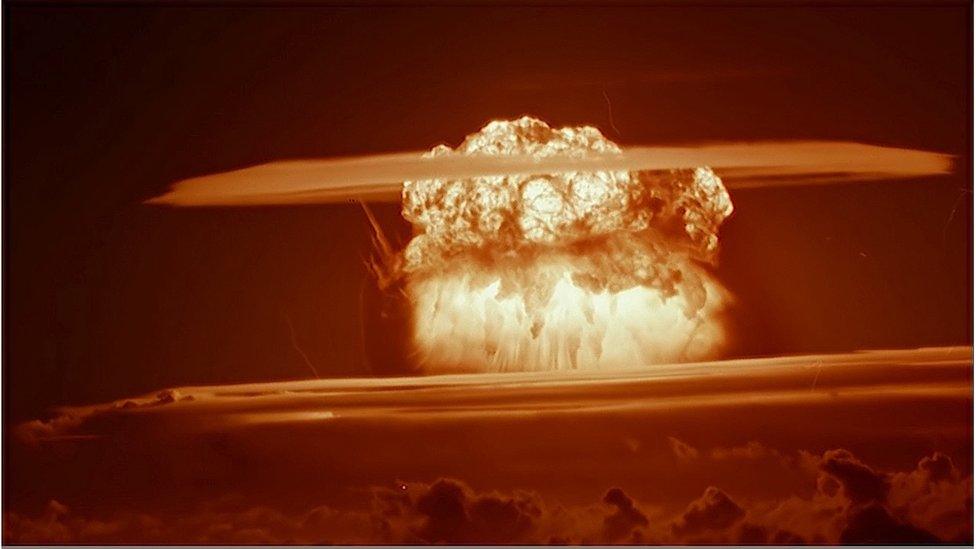
Plutonium fallout as a spike gained most support from members of the working group
The notion that we have entered a new geological age is real and should be formally recognised, according to an international report.
The verdict comes from a panel set up to judge the merits of adding an Anthropocene ("Age of Humans") time segment to the history of the Earth.
The group delivered its preliminary evidence and recommendations on Monday.
It now needs to identify a suitable marker in the environment that epitomises the start of the new phase.
Colin Waters from the British Geological Survey is secretary to the Anthropocene Working Group, external (AWG). He presented the progress report to the 35th International Geological Congress in South Africa.
"This is an update on where we are in our discussions," he told BBC News.
"We've got to a point where we've listed what we think the Anthropocene means to us as a working group.
"The majority of us think it is real; that there is clearly something happening; that there are clearly signals in the environment that are recognisable and make the Anthropocene a distinct unit; and the majority of us think it would be justified to formally recognise it.
"That doesn't mean it will be formalised, but we're going to go through the procedure of putting in a submission."
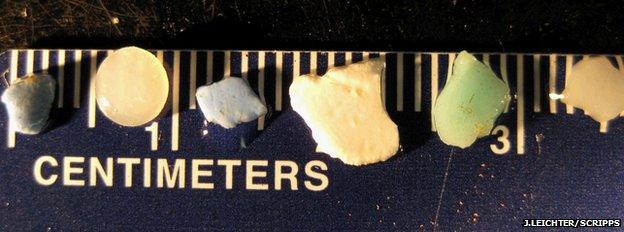
Plastics will break down into tiny, persistent fragments that will become buried in sediments
The hunt is now on for a "golden spike", as it is known - the marker that scientists can point to years hence - perhaps millions of years hence - and say, "There! That's the start of the Anthropocene Epoch."
And it would likely be an "epoch", said Dr Waters, meaning the current phase of Earth history known as the Holocene has terminated. We would, however, remain within the Quaternary Period and the Cenozoic Era, which are higher rankings in the division of time.
Ten members of the 35-strong working group believe the best spike will probably be plutonium fallout from bomb tests in the 1950s, to be found in marine or lake sediments, ice layers or perhaps even speleothems (stalagmites and stalactites).
When exactly did the "age of humans" really start to shape our planet?
Others on the panel, however, think there could be better spikes than the radionuclide. Counter-proposals include remnant plastics or some kind of carbon signature that signifies the rapid rise in CO2 emissions.
Nonetheless, a clear majority of group members (28 of them) accept that whichever marker is chosen, it should reflect events on Earth around the 1950s.
This is the beginning of what is often referred to as the "great acceleration", when human impacts on our planet suddenly intensified and became global in extent.
The Anthropocene Working Group expects to take two or three years, at least, to settle on the best golden spike or spikes.
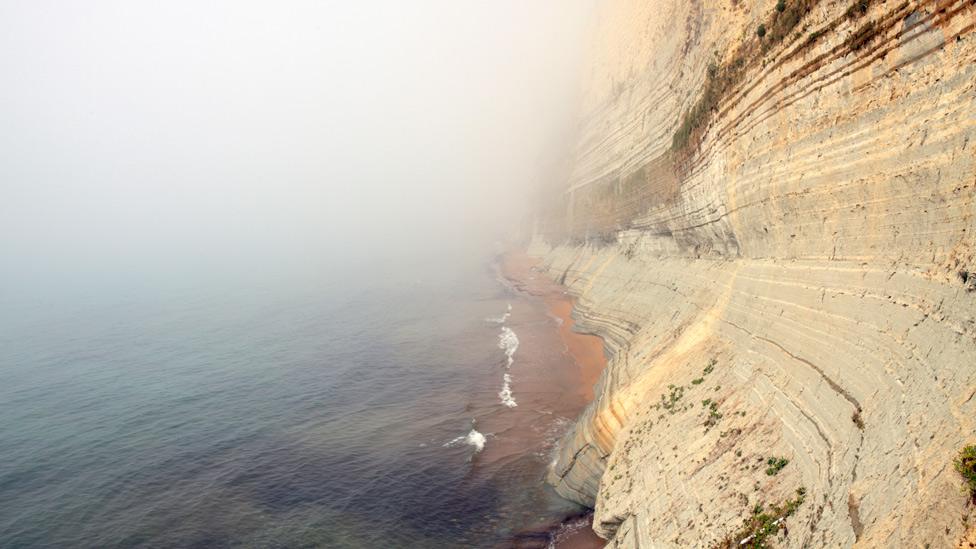
Will the "Age of Humans" be evident in the rock record millions of years from now?
Only then will the scientists produce their final assessment report, which will be sent for deliberation by the international geological community.
For an Anthropocene Epoch to be added to the "official" timeline of Earth history (the Chronostratigraphic Chart, external), it will need to win the backing of the International Commission on Stratigraphy (ICS) and then be further ratified by the executive committee of the International Union of Geological Sciences (IUGS).
Dr Waters said the AWG now needed the assistance of scientists who have cores of ocean sediment, coral specimens, speleothems and the like in their collections. These could all be relevant to the spike investigation.
"There may be research groups out there who have bore holes drilled through glacial ice, for example, which go through successions that could be used to define the Anthropocene.
"If they were to make those available so that we could do analyses of all the different signals, it would help us understand better whether this concept of the mid-20th Century being the boundary is the best one."
Without these offers of help the AWG might have to commission new drill holes - a process that could be very time consuming and very expensive.
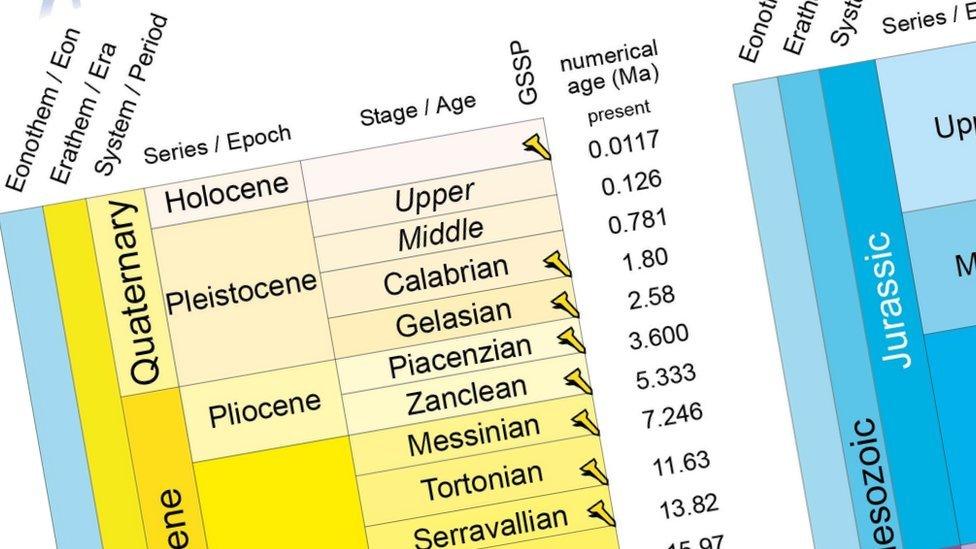
The Anthropocene would be added to the chart, above the Holocene
Jonathan.Amos-INTERNET@bbc.co.uk, external and follow me on Twitter: @BBCAmos, external
- Published8 January 2016
- Published13 January 2016
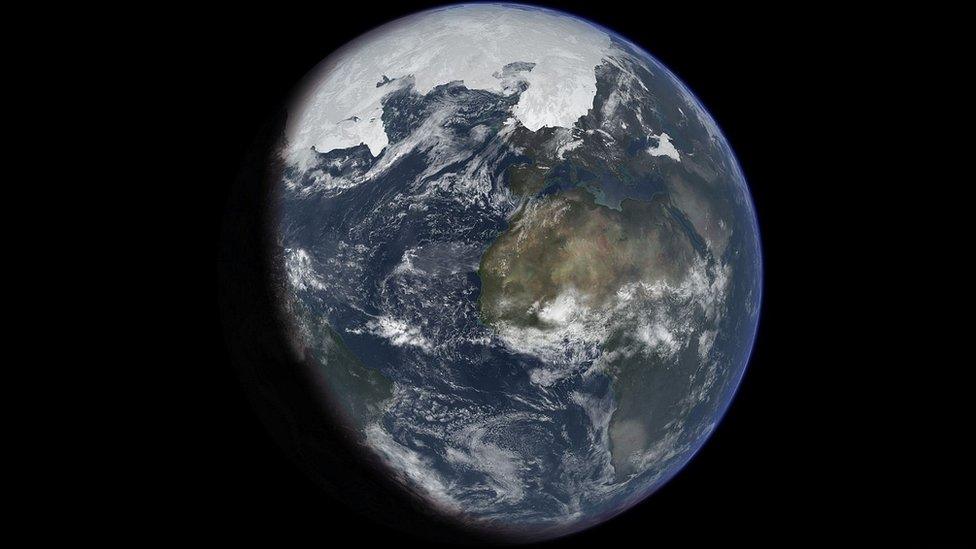
- Published12 February 2015
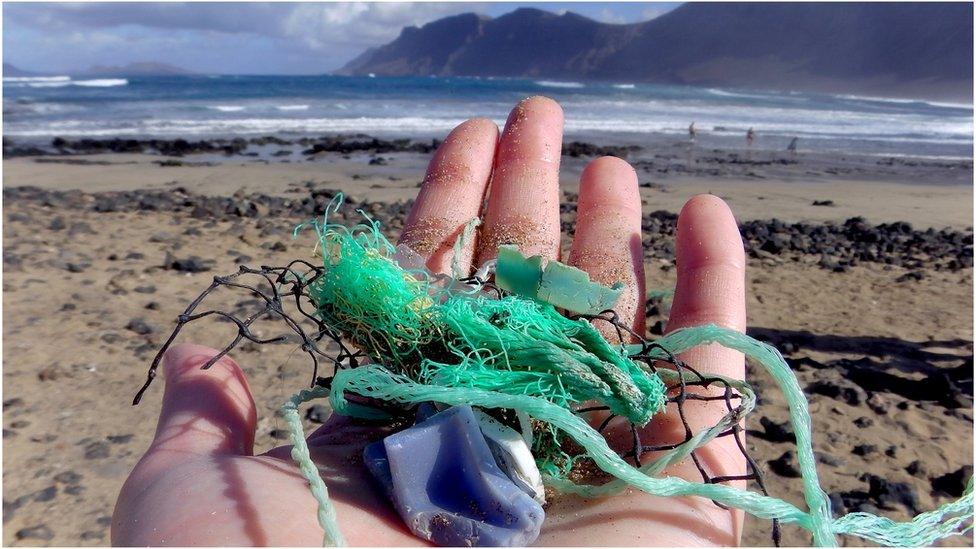
- Published11 March 2015
